On the very day the unit received and served the United Nations (U.N.) Contingent-Owned Equipment (COE) inspection team, the hospital had to handle two complex medical tasks, including an emergency case requiring air medical evacuation to a higher-level facility.
The patient was a 52-year-old Ghanaian service-member admitted with pain in the right flank. After conducting examinations and tests, doctors at the hospital suspected liver cancer with lung metastasis. The patient’s lungs were critically damaged, showing signs of respiratory failure.
    |
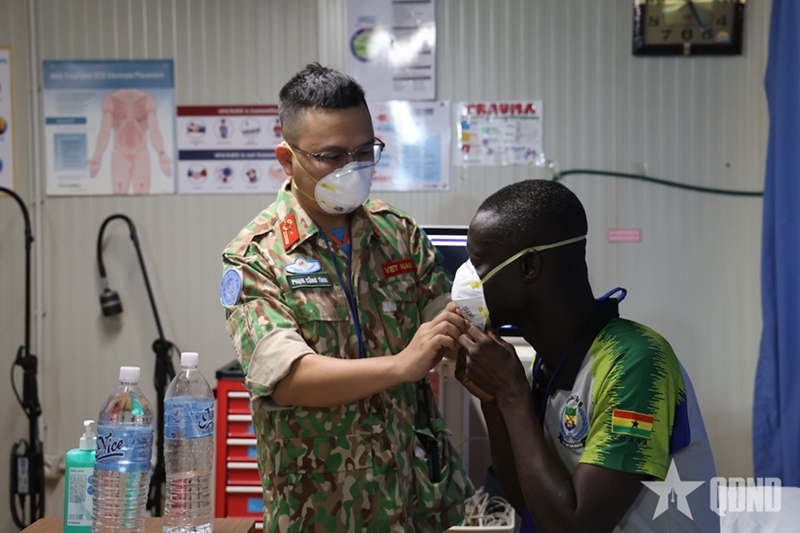 |
|
The patient receives intensive care prior to air medical evacuation. |
Captain, Doctor Pham Ly Thanh, a member of the hospital’s Air Medical Evacuation Team (AMET), said that to comply with U.N. medical standards and procedures, the assigned personnel promptly activated and implemented the required air evacuation protocols. The patient was admitted the previous afternoon, and the evacuation flight was carried out early the next morning. The AMET team had to prepare throughout the night, completing a series of complex administrative procedures and readiness steps. Preparing the full set of specialized medical equipment, medicines, and essential personal items for such a mission is highly demanding.
    |
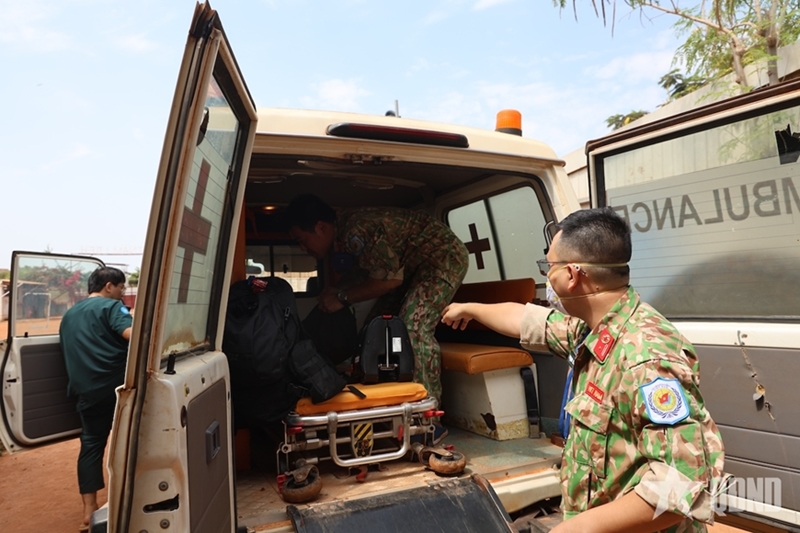 |
|
Preparing equipment for patient transport |
During the entire three-hour flight from Bentiu to Juba, the medical personnel on board provided intensive care for the patient, ensuring absolute safety before handing him over to the higher-level hospital.
    |
 |
|
The patient being transported on a special flight to a higher-level hospital in Juba, South Sudan |
On the same day, the hospital also successfully conducted a surgery to remove a clavicle fixation plate for another patient, strictly following professional standards. Under field conditions with limited medical equipment, performing such a procedure is far from simple. To guarantee quality and timing, the hospital’s director personally joined the surgical team.
This was the fifth successful surgery carried out by L2FH Rotation 7 in just over a month since assuming duty, demonstrating the professional competence and reputation of Vietnam’s peacekeeping medical staff.
    |
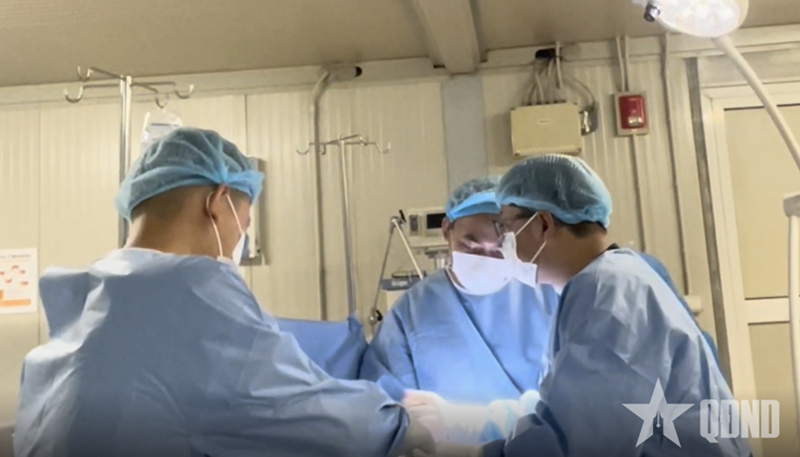 |
|
Surgical team conducting the operation to remove a clavicle fixation plate |
In addition to the two medical tasks, the hospital also completed the U.N. COE inspection the same day. This inspection is a key process used to verify the unit’s logistics capacity, equipment readiness, and operational quality. Despite limited preparation time after newly deploying to the mission area, and despite equipment shortages, the hospital received positive assessments thanks to its proactive approach, ingenuity, compact organization, and its ability to fully meet criteria in equipment management, medical capability, living conditions, environmental hygiene, fire safety, technical service, and logistics.
    |
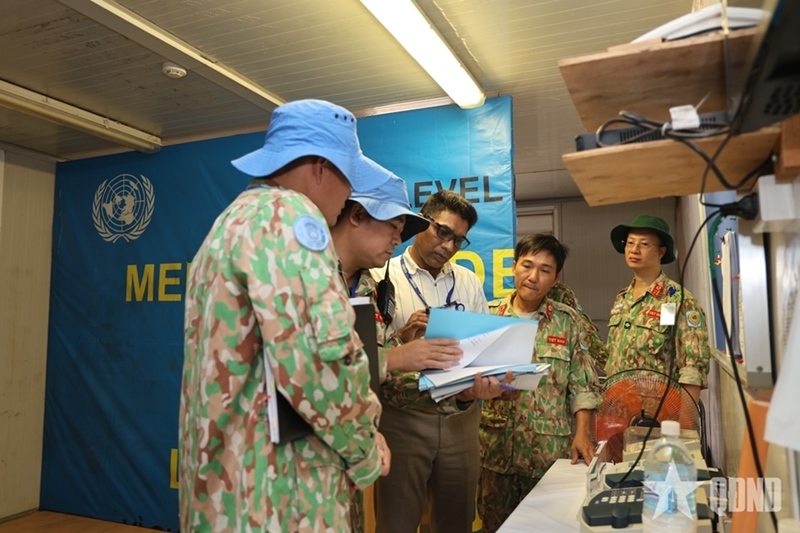 |
|
Members of the U.N. COE inspection team working with Vietnam’s Level-two Field Hospital Rotation 7 |
    |
 |
|
The hospital ensures full compliance with all required COE inspection categories, including personal equipment. |
    |
 |
|
COE inspection conducted thoroughly to ensure all equipment and operations meet mission requirements |
    |
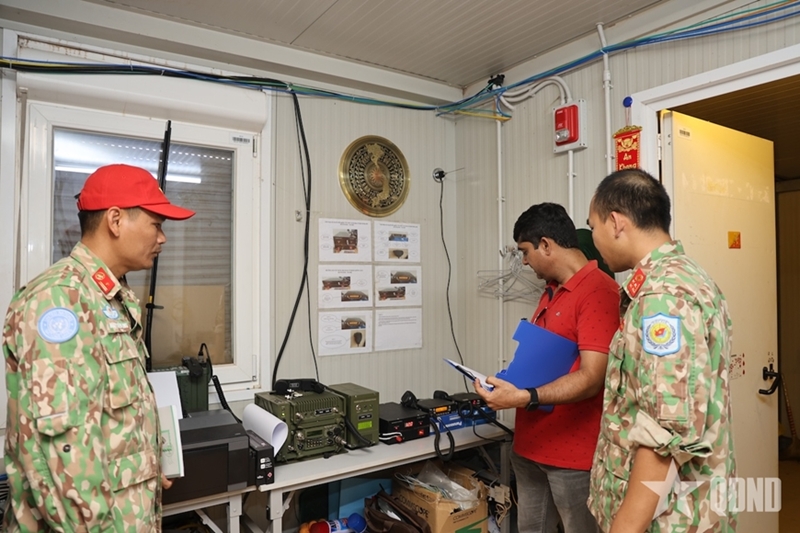 |
|
Inspecting the communication system |
Dr. Niflar, a member of the U.N. COE inspection team, noted that over the past year and a half, he has visited Vietnam’s L2FHs several times for periodic evaluations. Each time, he observed clear improvements, with all activities carried out efficiently and in good order.
The results of the U.N. COE inspection not only reaffirms the unit’s capability, but also provides an opportunity for L2FH Rotation 7 to enhance equipment management in line with international standards, continuing to demonstrate the professionalism of Vietnam’s “blue-beret” soldiers.
Translated by Trung Thanh